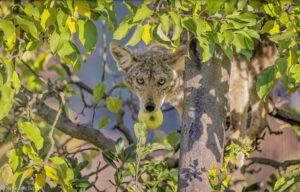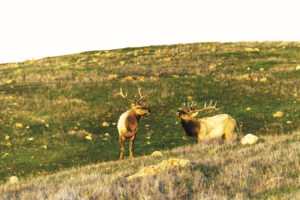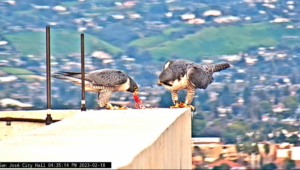To learn more about ancient megafauna and efforts to protect and restore the Bay Area’s megafauna:
Megafauna Video
Check out our feature article on the Bay Area’s prehistoric megafauna, and then watch KQED’s video on megafauna, part of their Quest program.
Tule Elk Restoration
Point Reyes National Seashore Association
Point Reyes Station, CA 94956
(415) 464-5100
Home to one of the largest herds of tule elk in California, hundreds of elk range the park’s fenced 2,600-acre Tomales Point Preserve while about 30 elk range freely elsewhere within the park. If you’re interested in becoming a volunteer elk docent during the summer and fall, contact elk program manager Doug Hee at (415) 464-5145 .
Condor Restoration
Ventana Wilderness Society Condor Reintroduction
19045 Portola Dr. Ste. F-1
Salinas, CA 93908
(831) 455-9514
The Ventana Wilderness Society is a non-profit organization dedicated to preserving the wildlife of the Central Coast of California. VWS has been the lead organization in condor reintroduction, research and education efforts at Big Sur and, more recently, at Pinnacles National Monument. Website contains a monthly “Notes from the Field” account of the activities and accomplishments of the Big Sur condor flock from a field biologist’s perspective.
CONDOR RELEASE UPDATE:
Four condors were released at Pinnacles National Monument on Monday, January 5, after condor number 287 returned to the release site to feed. Condor number 287 flew free on Saturday, December 20. Heavy rains and strong winds had prevented the bird from returning to the site until today.
“The return of condor number 287 was the signal we needed to release additional birds,” said Ventana Wilderness Society executive director Kelly Sorenson. “Now with the birds developing successful routines, the project is well underway.”
The release of the four condors today brings the total number of free-flying condors at the park to five. Condors number 286, 270, 266 and 265, all joined condor 287 at the roosting site near to the release facility. All five birds are doing well and feeding, according to Sorenson.
For more information, please contact Ventana Wilderenss Society (831) 455-9514, or Pinnacles National Monument (831) 389-4485 x230
5000 Hwy. 146
Paicines, CA 95043
(831) 389-4485
This is the place to go look for the most recently released condors. The website is a great resource for condor facts and biology.
University of California
1101 Valley Life Sciences Building
Berkeley, CA 94720-4780
(510) 642-1821
Home of the Irvingtonian fossils.
California megafauna in print:
The California Condor: A Story of Biology and Conservation by Noel and Helen Snyder
Princeton University Press, June 2003
The Snyders offer a comprehensive reference on the condor, tracing the history of study and conservation efforts, detailing the biology and recent decline of the species, and sketching a hopeful plan for the condor’s ultimate restoration as a viable member of a wild ecosystem. With color photos.
In Condor Country: A portrait of a landscape, its denizens, and its defenders by David Darlington
H. Holt, 1991
Bear in Mind: The California Grizzly by Susan Snyder
Heyday Books, Berkeley, CA, October 2003
From the archives of the Bancroft Library, librarian Susan Snyder has fashioned the story of the California grizzly bear. Once arguably the most powerful and terrifying animal in the California landscape, the grizzly now lives in the imagination, a disembodied symbol of the romantic West. More than 150 images from the library’s archives and collections accompany the bear stories of Indians, explorers, vaqueros, forty-niners, and naturalists, among others. A uniquely compelling work of natural history.
California Grizzly by Tracy Storer and Tevis, Lloyd P.
University of California Press: Berkeley CA, November 1996

.jpg)



